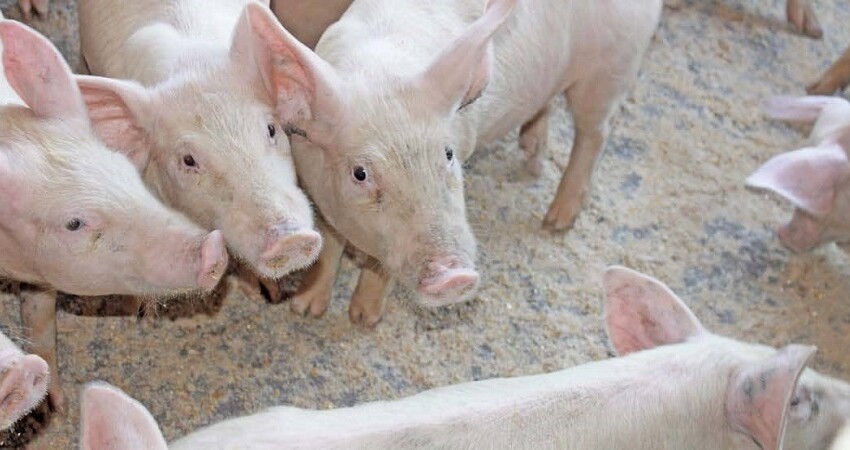

Feed Conversion Ratio (FCR): or Feed Conversion Efficiency (FCE): is the measure of a pig’s efficiency in converting feed mass into increased body mass. Specifically, FCR is the mass of the food eaten divided by the body mass gain, all over a specified period. Animal breeds with a low FCR are considered efficient users of feed.
Average Daily Gain (ADG): is a significant factor in assessing growth rates in most food animal species. Your aim is that you keep a pig that grows faster so that you can achieve market weights in shortest period of time using the least amount of input/cost so that you receive the highest profit. In pig production, the most cost-efficient feed conversion and the highest average daily gain are the primary factors determining efficiency of production.
Health: Poor health will up the feed conversion ratio and reduce the average daily gain. Diseases like African Swine Fever (ASF) can wipe away all your pigs and cause a massive loss.
Genetics: The current market demands leaner carcases , so you should strive to produce leaner pigs, animals with high growth rate, larger litter size, high heritability and low conversion ratio. All these are directly influenced by genetics.
Reproduction: Poor selection of the breeding stock and choice of a boar or artifical insaminate will directly affect your pig farming business profits.
Market and price: The market for pigs and pork is wide but has no importance before you identify your own market and the price it offers.
We have many butchers, restaurants, hotels and supermarkets establishing today with pork on their menu both in Urban and rural areas. Pork is a delicacy to many Ugandans and largely considered a social meat that cannot miss on several parties.
Costs: Items you will have to spend money on, when establishing your Pig Farming Business
Fixed Costs: You will incur these before you start any production. They remain the same irrespective of any production increases or decreases and include: Building costs, Purchase/construction of feed troughs, Purchases or replacement of breeding stock, and Purchase of land.
Variable Costs: Costs that will change in proportion to your production levels including Veterinary costs, stationary , transport , Maintenace of facilities, Marketing costs, wages and salaries , and losses due to mortalities.
Income: The sources from which your business expects money to come from will also affect your profits. Your Pig Farming Business could expect to make money from the sale of Weaners, Porkers and baconers, cull boars and sows, breeding boars and sows ,as well as sale of Manure.
Profits: This is the difference between your costs and income. The costs should include labor and any possible risk in your business. The most expensive input in pig production is feeds because it consumes between 60 to 80% of the total production costs. You have to implement strategies that will reduce the input costs in your business.
 Contact Jaguza Support
Contact Jaguza Support